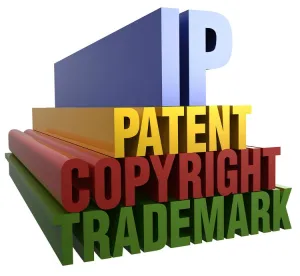In a February 19, 2020 decision the Federal Circuit held that a patentee does not escape 35 U.S.C. § 287’s marking requirement merely by ceasing sales of the practicing product. Instead, the Federal Circuit held that once a patentee (or its licensees) sell articles that practice the patent, the obligation to mark in order to obtain pre-suit damages continues regardless of whether sales of the product in question cease. This requirement furthers the purpose of § 287, which places a burden on the patentee to provide notice to the world that products in the market practice the patent in question.
In Arctic Cat Inc. v. Bombardier Recreational Products, Inc., No. 2019-1080, Arctic Cat sued Bombardier for infringement of U.S. Patent Nos. 6,793,545 and 6,568,969 relating to thrust steering systems for personal watercraft. Arctic Cat itself, however, had ceased offering any covered products before the patents issued and instead entered into a licensing agreement with Honda that did not obligate Honda to mark any of its product offerings with the asserted patents. Despite the fact that Honda’s products were unmarked, there was evidence that Honda had ceased making any covered products approximately a year before Arctic Cat brought suit against Bombardier.
The lower court found Bombardier to be a willful infringer and ordered Bombardier to pay pre-suit damages. Bombardier appealed these findings to the Federal Circuit. In finding for Bombardier, the Federal Circuit held that the mere cessation of sales of unmarked products, without any other curative action taken by the patentee, did not cure Arctic Cat’s noncompliance with § 287 and that Arctic Cat was therefore ineligible for past damages: “Thus, once a patentee begins making or selling a patented article, the notice requirement attaches, and the obligation imposed by § 287 is discharged only by providing actual or constructive notice.” (Slip op. at 8).
The Federal Circuit, citing Amsted Indus. Inc. v. Buckeye Steel Castings Co., 24 F.3d 178, 187 (Fed. Cir. 1994), rejected Arctic Cat’s further argument that willful infringement, which requires knowledge of the patent, entitled Arctic Cat to past damages, as the marking statute places a burden on the patentee, and is not directed to what an infringer actually knows. Having failed to mark, the Court found that Arctic Cat could not satisfy § 287.
The rationale of Arctic Cat suggests that the last status of the goods sold by a patentee before cessation of sale—whether the goods were compliant or non-compliant with the marking statute—will be accorded to the period between the cessation of sales and the provision of actual notice or the filing of suit against an accused infringer. Non-practicing entities, on the other hand, remain unaffected by the marking requirement of § 287. As a result, patentees considering whether to cease the sale of products covered by their patents should ensure that they have undertaken measures to put themselves in compliance with § 287 before stopping sales (See, e.g. Am. Med. Sys. v. Med. Eng'g Corp., 6 F.3d 1523, 1537-38 (Fed. Cir. 1993) for exemplary marking statute requirements) or subsequently provide actual notice to known infringers—because they cannot bootstrap themselves into the privileged status of a non-practicing entity simply by the formal fact of no longer selling unmarked goods.





 />i
/>i
